The ollie is the first trick every sidewalk surfer should learn how to perform because it allows riders to bring the skateboard up into the air.
Skateboarding’s most important trick was invented by Alan Gelfand in 1977, but it still remains the sport’s core move.
Whenever a beginner skater pulls off an ollie, he or she is ready to unlock a vast collection of maneuvers.
The best way to learn how to ollie is to understand what each foot does separately before putting it together.
Ollie Technique 101
The first thing you need is to feel comfortable standing on the board and ready to ollie.
For that to happen, you need to place your back foot on the tail with the ball of the foot feeling the edge of the board’s tail.
Your front foot should be just a little bit up from the center of the skate.
First thing’s first.
Start practicing your ollie technique by pushing down with your back foot/ankle to build muscle memory. Repeat the process 100 times, or more, if possible.
Now, let’s the put the whole ollie trick together:
1. Stand on the skateboard by placing your back foot on the tail and your front foot centered on the deck;
2. Crouch low – slowly bend your knees and lower your arms;
3. Keep your head and shoulders straight;
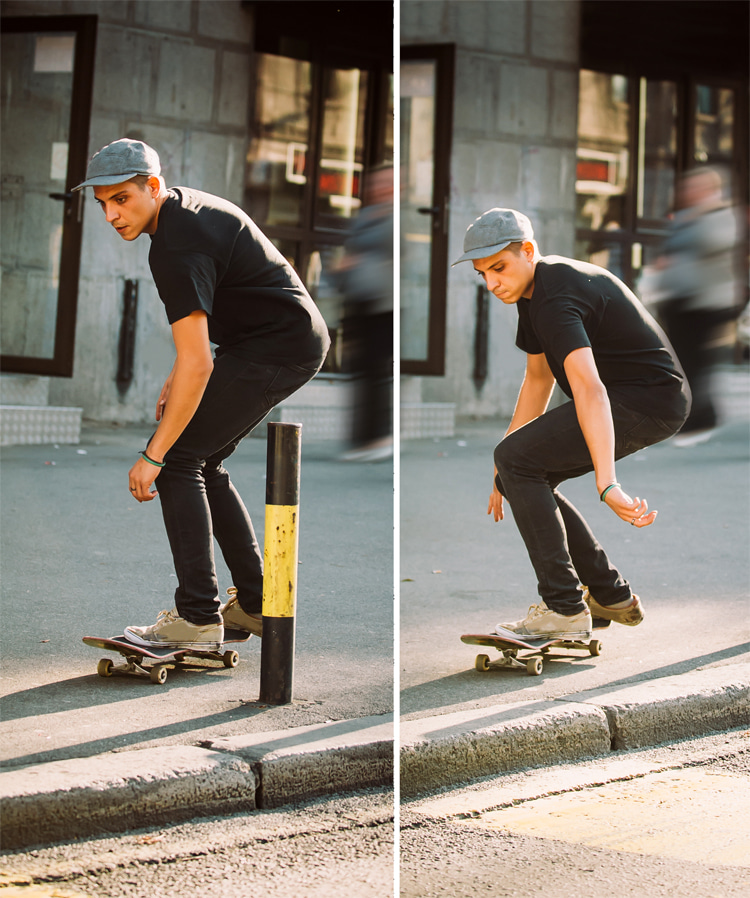

4. Look down at the skateboard – keep your weight evenly balanced over both legs;
5. Jump as you would if you didn’t have a board under your feet;
6. Push down the skateboard’s tail using the ankle and the ball of the foot;
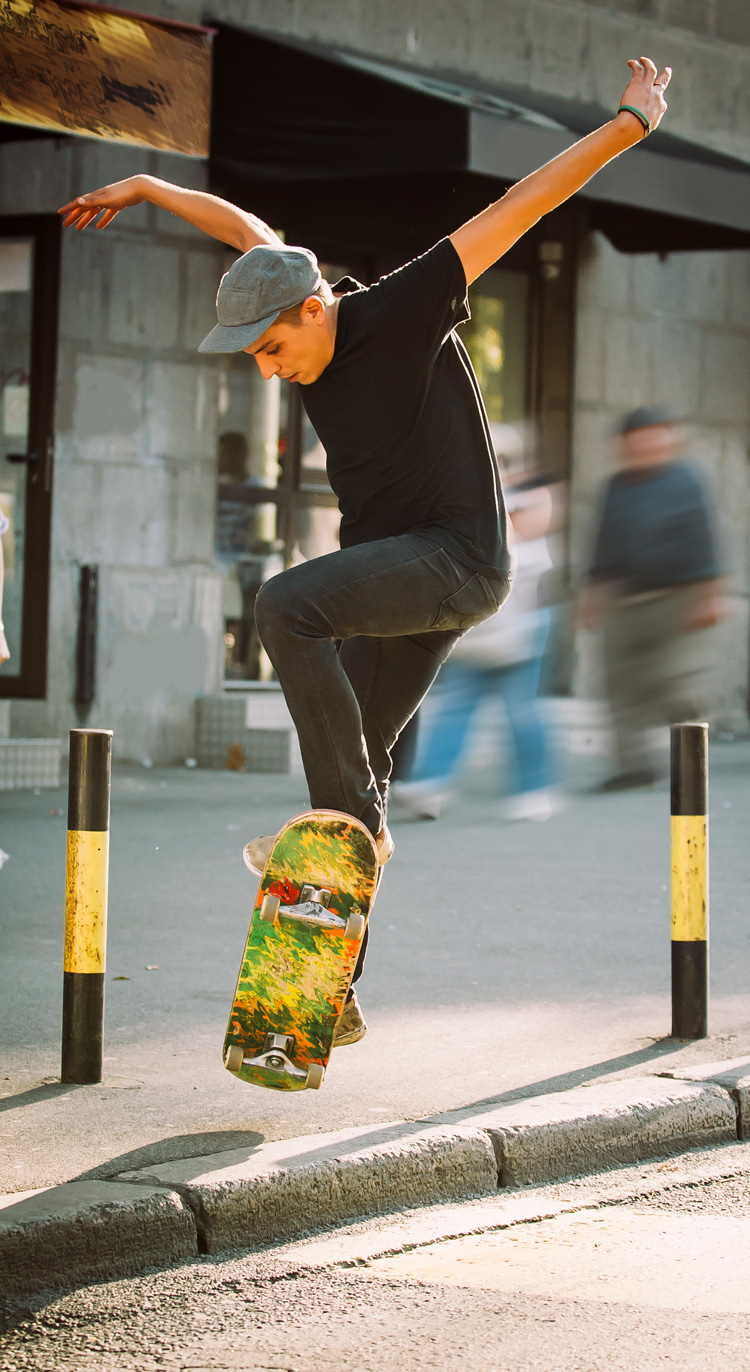

8. When the tail hits the ground, your front foot starts dragging up the board;
9. Let the front foot catch the nose of the board, and then push it forward and extend the leg while lifting your back foot up;
10. Level the skateboard in the air and prepare for landing;
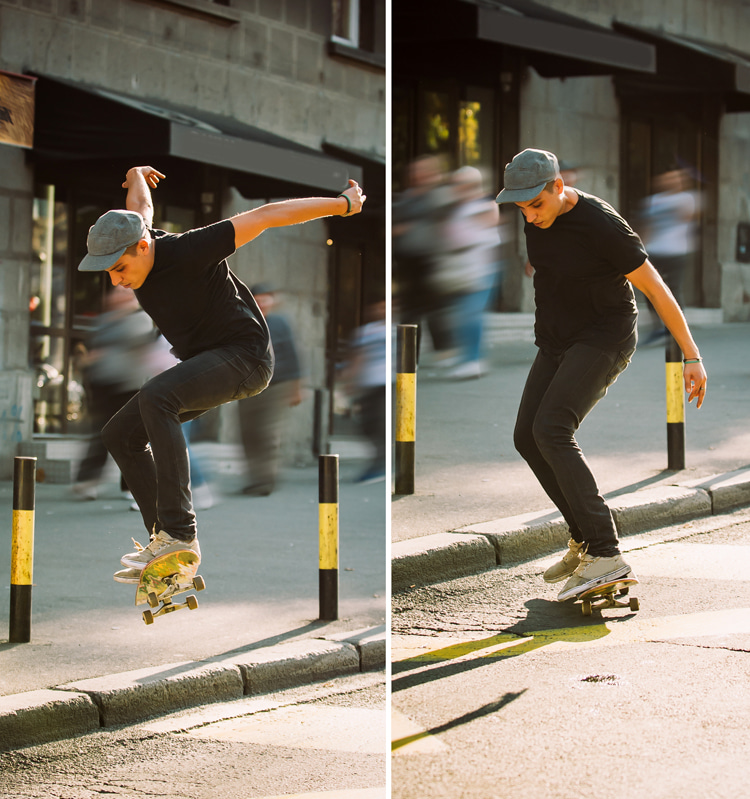

Details That Matter
In a way, the ollie is a mix of ankle work and jumping, in a separate and combined effort between both feet.
Remember that you’re supposed to jump off the board and not off the tail when it’s on the ground.
The front foot has a specific motion. Actually, it plays a vital role in the quality and height of the ollie.
It all starts with the front foot flat on the board.
The trick is then to turn it on the board around 90 degrees and then drag the toes up the board using the top corner of your shoe.
As the board lifts off, the front foot slides up the board and then pushes the nose forward to maximize air time.
So, you’ll need both your feet doing their job individually and correctly. Otherwise, you and your skate will never ollie.
In conclusion, the back foot pops the board, and the front foot propels it upward by dragging up the grip tape.
Practice each foot’s movement separately to get acquainted with each individual routine.
Remember that there’s a timing for the coordinated movement involving the back and the front foot.
Don’t drag the front foot too soon and make sure it turns 90 degrees before dragging up the board, and with the sole of your shoe almost perpendicular to the ground.
Finally, as soon as you hit the peak of your ollie, push the nose of the board forward, level it in the air, and get ready to land it with both of your knees bent.
If you’re not lifting your back foot simultaneously, you will hold the board down and not let it go up.
In the end, you will not need to think about what you’re doing – your body will naturally and automatically perform each individual movement.
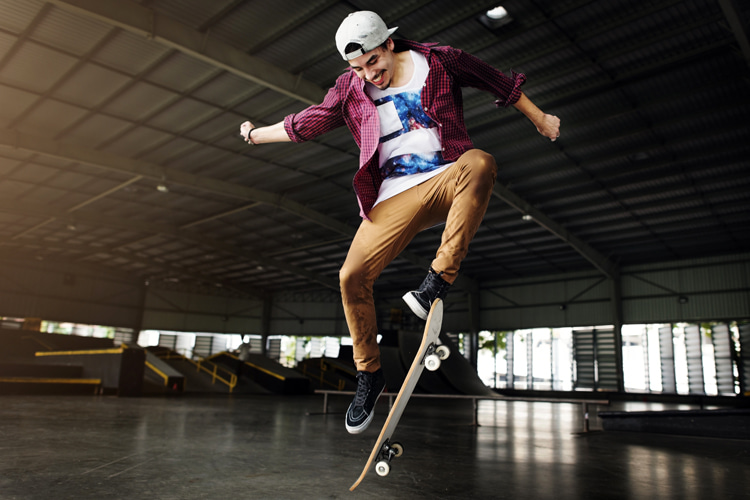

Common Mistakes
One of the most common problems is getting the board up into the air.
Novice skaters struggle to get airborne because their back foot remains standing on the tail of the board, preventing it from going up.
The trick is to use the ankle, raise the heel, and let the back foot jump off the board even before it hits the ground.
If the skateboard is not staying under you, you are probably twisting your body before your jump or not jumping straight up.
Your brain is basically telling you that you shouldn’t land on a board with wheels under it – it’s an instinctive mechanism.
The board might also land at an angle or even sideways. However, with practice, the board will start to land in the same direction that you started.
Don’t worry if you’re not getting off the ground much – that’s part of the learning process. The more you practice, the better your signature ollie will look.
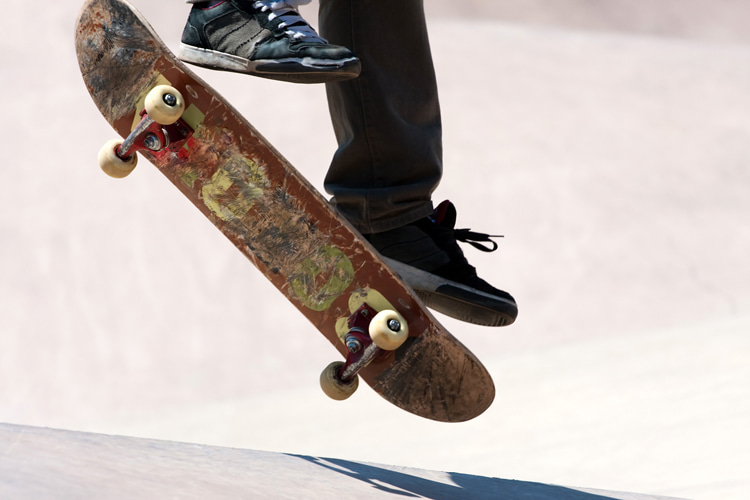

Analyze, Correct and Practice
Learning how to ollie can be frustrating, but it really is only a matter of practice, patience, and perseverance.
It looks hard to perform, but it is easier than it seems.
If possible, grab your smartphone, film your ollie attempts, and analyze each foot’s behavior individually and cooperatively.
The ollie is all about popping the back foot, jumping up, dragging the front foot, push it forward, and finally level out the skateboard.
One final tip: although not the ideal option, you can start practicing your ollies in a grass field or carpet to minimize injuries. But it’s a bit harder.
If you need, ask for advice. The ollie’s body motion is slightly strange, so an outsider can give valuable tips on how to correct or improve your pop.
Last but not least, watch a slow-motion video that breaks down every movement involved in the art of ollieing.




Recent Comments